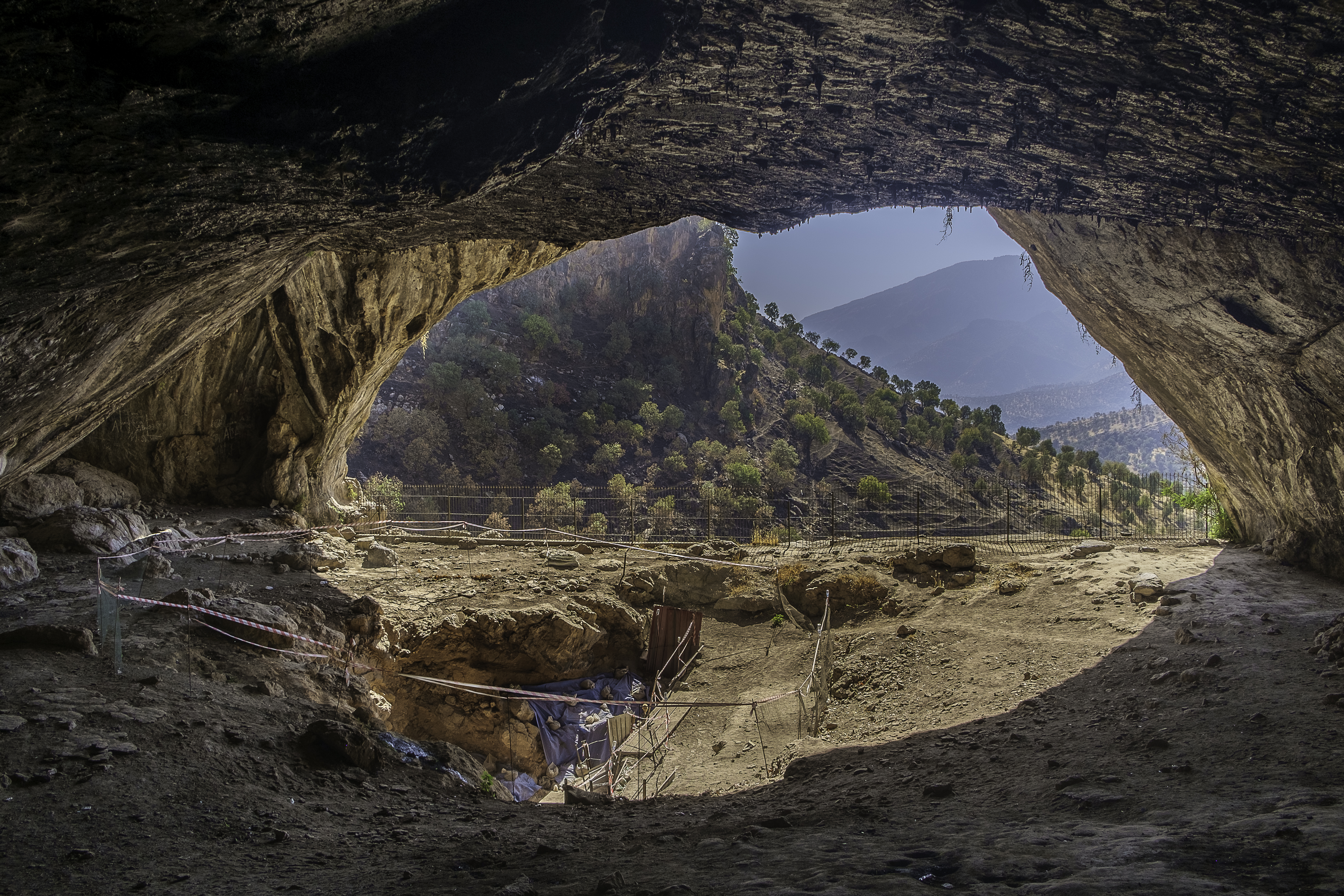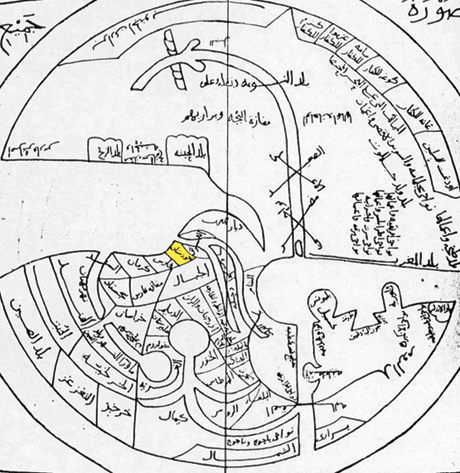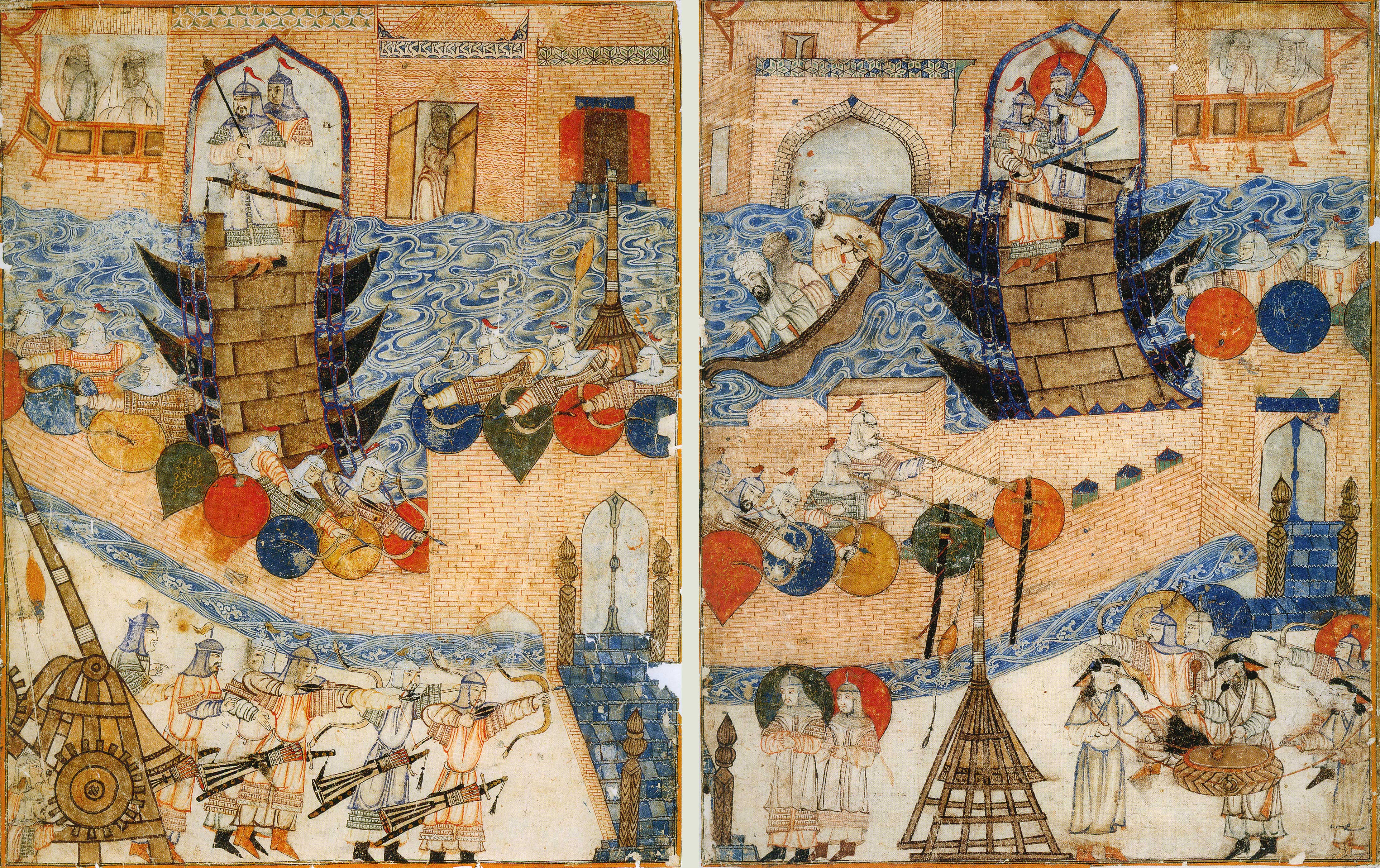|
Ubulla
Al-Ubulla ( ar, الأبلة), called Apologou ( gr, 'Απολόγου 'Εμπόριον) by the Greeks in the pre-Islamic period, was a port city at the head of the Persian Gulf east of Basra in present-day Iraq. In the medieval period, it served as Iraq's principal commercial port for trade with India. Location Al-Ubulla was situated on the right bank of the Euphrates–Tigris estuary at the opening into the Persian Gulf. It was located to the east of old Basra and lay on the northern side of the eponymous canal, the Nahr al-Ubulla, which connected Basra southeastwards to the Tigris river, Abadan (in modern Iran) and ultimately to the Persian Gulf. The 'Ashar neighborhood of modern Basra currently occupies the site of al-Ubulla. History Al-Ubulla is identified with the ancient city of Apologou mentioned in the Greek manuscript ''Periplus of the Erythraean Sea''. The city dates at least to the Sasanian Empire, Sasanian era (3rd–7th centuries CE), and possibly before. According ... [...More Info...] [...Related Items...] OR: [Wikipedia] [Google] [Baidu] |
Utba Ibn Ghazwan Al-Mazini
Utba ibn Ghazwan al-Mazini ( ar, عُتبة بن غَزْوان المازني, ʿUtba ibn Ghazwān al-Māzinī) (–638) was a well-known companion of the Islamic prophet Muhammad. He was the seventh person to convert to Islam and participated in the ''hijra'' to Abyssinia, but returned to stay with Muhammad in Mecca before making the second ''hijrah'' to Medina. He fought at the battle of Badr (624), the battle of Uhud (625), the Battle of the Trench (627) and many others, including the battles of Yamamah. During the caliphate of Umar (r. 634–644), Utba commanded a force of 2,000 men in a campaign against Ubullah which lasted from June through September 635. Once Uballah was occupied, Utba sent a force across the Tigris River which occupied the district of Furat, followed by Meisan and Abarqubaz. He was soon appointed governor of Basra (Iraq) by the caliph. In 639 Utba left for the Hijaz to perform hajj and to request Umar to relieve him of his office as governor. Umar re ... [...More Info...] [...Related Items...] OR: [Wikipedia] [Google] [Baidu] |
Abu Abdallah Al-Baridi
Abu Abdallah al-Hasan al-Baridi (; ) was the most prominent of the Baridi family, Iraqi tax officials who used the enormous wealth gained from tax farming to vie for control of the rump Abbasid Caliphate in the 930s and 940s. In this contest Abu Abdallah and his two brothers manoeuvred between the military commanders Ibn Ra'iq and Bajkam, the Hamdanids of Mosul, the Buyids of Fars, and the ruler of Oman; they twice occupied the Abbasid capital Baghdad, but were never able to hold it for long; and at different times ruled Khuzistan, Wasit and Basra; Abu Abdallah himself was named vizier of the Abbasid caliph four times in the process. Ultimately, the constant warfare against multiple enemies exhausted the family's resources, and by 943 Abu Abdallah resorted to assassinating his youngest brother to shore up his wealth. Abu Abdallah died in June 944, and was succeeded as governor of Basra by his son Abu'l-Qasim, who ruled the city until the Buyids conquered it in 947. Origin and e ... [...More Info...] [...Related Items...] OR: [Wikipedia] [Google] [Baidu] |
Eastern Arabia
Eastern Arabia, historically known as al-Baḥrayn ( ar, البحرين) until the 18th century, is a region stretched from Basra to Khasab along the Persian Gulf coast and included parts of modern-day Bahrain, Kuwait, Eastern Saudi Arabia, United Arab Emirates, Qatar, and Oman. The entire coastal strip of Eastern Arabia was known as "Bahrain" for a millennium. Until very recently, the whole of Eastern Arabia, from the Shatt al-Arab to the mountains of Oman, was a place where people moved around, settled and married unconcerned by national borders. The people of Eastern Arabia shared a culture based on the sea; they are seafaring peoples. The Arab states of the Persian Gulf are all located in Eastern Arabia. The modern-day states of Bahrain, Kuwait, Oman, Qatar and UAE are the most commonly listed Gulf Arab states; Saudi Arabia is often considered a Gulf Arab state as well, but most of the country's inhabitants do not live in Eastern Arabia, with the exception of the Bahrani pe ... [...More Info...] [...Related Items...] OR: [Wikipedia] [Google] [Baidu] |
Medieval Iraq
Iraq is a country in Western Asia that largely corresponds with the territory of ancient Mesopotamia. The history of Mesopotamia extends from the Lower Paleolithic period until the establishment of the Caliphate in the late 7th century AD, after which the region came to be known as Iraq. Encompassed within Iraqi territory is the ancient land of Sumer, which came into being between 6,000 and 5,000 BC during the Neolithic Ubaid period of Mesopotamian history, and is widely considered the oldest civilization in recorded history. It is also the historic center of the Akkadian, Neo-Sumerian, Babylonian, Neo-Assyrian, and Neo-Babylonian empires, a succession of local ruling dynasties that reigned over Mesopotamia and various other regions of the Ancient Near East during the Bronze and Iron Ages. Iraq during antiquity witnessed some of the world's earliest writing, literature, sciences, mathematics, laws and philosophies; hence its common epithet, the Cradle of Civilization. This era ... [...More Info...] [...Related Items...] OR: [Wikipedia] [Google] [Baidu] |
History Of Basra
Basra ( ar, ٱلْبَصْرَة, al-Baṣrah) is an Iraqi city located on the Shatt al-Arab. It had an estimated population of 1.4 million in 2018. Basra is also Iraq's main port, although it does not have deep water access, which is handled at the port of Umm Qasr. However, there is ongoing constuction of Grand Faw Port on the coast of Basra, which is considered a national project for Iraq and will become one of the largest ports in the world and the largest in the Middle East, in addition, the port will strengthen Iraq’s geopolitical position in the region and the world. Furthermore, Iraq is planning to establish large naval base in the Faw peninsula. Historically, the city is one of the ports from which the fictional Sinbad the Sailor journeyed. The city was built in 636 and has played an important role in Islamic Golden Age. Basra is consistently one of the hottest cities in Iraq, with summer temperatures regularly exceeding . In April 2017, the Iraqi Parliament ... [...More Info...] [...Related Items...] OR: [Wikipedia] [Google] [Baidu] |
Former Populated Places In Iraq
A former is an object, such as a template, gauge or cutting die, which is used to form something such as a boat's hull. Typically, a former gives shape to a structure that may have complex curvature. A former may become an integral part of the finished structure, as in an aircraft fuselage, or it may be removable, being using in the construction process and then discarded or re-used. Aircraft formers Formers are used in the construction of aircraft fuselage, of which a typical fuselage has a series from the nose to the empennage, typically perpendicular to the longitudinal axis of the aircraft. The primary purpose of formers is to establish the shape of the fuselage and reduce the column length of stringers to prevent instability. Formers are typically attached to longerons, which support the skin of the aircraft. The "former-and-longeron" technique (also called stations and stringers) was adopted from boat construction, and was typical of light aircraft built until the ... [...More Info...] [...Related Items...] OR: [Wikipedia] [Google] [Baidu] |
Ibn Batuta
Abu Abdullah Muhammad ibn Battutah (, ; 24 February 13041368/1369),; fully: ; Arabic: commonly known as Ibn Battuta, was a Berber Maghrebi scholar and explorer who travelled extensively in the lands of Afro-Eurasia, largely in the Muslim world. He travelled more than any other explorer in pre-modern history, totalling around , surpassing Zheng He with about and Marco Polo with . Over a period of thirty years, Ibn Battuta visited most of southern Eurasia, including Central Asia, Southeast Asia, South Asia, China, and the Iberian Peninsula. Near the end of his life, he dictated an account of his journeys, titled '' A Gift to Those Who Contemplate the Wonders of Cities and the Marvels of Travelling'', but commonly known as ''The Rihla''. Name Ibn Battuta is a patronymic literally meaning "son of the duckling". His most common full name is given as Abu Abdullah Muhammad ibn Battuta. In his travelogue, ''the Rihla'', he gives his full name as Shams al-Din Abu’Abdallah Muhamma ... [...More Info...] [...Related Items...] OR: [Wikipedia] [Google] [Baidu] |
Ibn Hawqal
Muḥammad Abū’l-Qāsim Ibn Ḥawqal (), also known as Abū al-Qāsim b. ʻAlī Ibn Ḥawqal al-Naṣībī, born in Nisibis, Upper Mesopotamia; was a 10th-century Arab Muslim writer, geographer, and chronicler who travelled during the years 943 to 969 AD.Ludwig W. Adamec (2009), ''Historical Dictionary of Islam'', p.137. Scarecrow Press. . His famous work, written in 977 AD, is called (; "The face of the Earth"). The date of his death, known from his writings, was after 368 AH/978 AD. Biography Details known of Ibn Hawqal's life are extrapolated from his book. He spent the last 30 years of his life traveling to remote parts of Asia and Africa and writing about what he saw. One journey brought him 20° south of the equator along the East African coast where he discovered large populations in regions the ancient Greek writers had deemed, from logic rather than knowledge, were uninhabitable. Ṣūrat al-’Arḍ Ibn Hawqal based his great work of geography on a revision ... [...More Info...] [...Related Items...] OR: [Wikipedia] [Google] [Baidu] |
Yaqut Al-Hamawi
Yāqūt Shihāb al-Dīn ibn-ʿAbdullāh al-Rūmī al-Ḥamawī (1179–1229) ( ar, ياقوت الحموي الرومي) was a Muslim scholar of Byzantine Greek ancestry active during the late Abbasid period (12th-13th centuries). He is known for his , an influential work on geography containing valuable information pertaining to biography, history and literature as well as geography. Life ''Yāqūt'' (''ruby'' or ''hyacinth'') was the '' kunya'' of Ibn Abdullāh ("son of Abdullāh"). He was born in Constantinople, and as his ''nisba'' "al-Rumi" ("from Rūm") indicates he had Byzantine Greek ancestry. Yāqūt was "mawali" to ‘Askar ibn Abī Naṣr al-Ḥamawī, a trader of Baghdad, Iraq, the seat of the Abbasid Caliphate, from whom he received the ''laqab'' "Al-Hamawī". As ‘Askar's apprentice, he learned about accounting and commerce, becoming his envoy on trade missions and travelling twice or three times to Kish in the Persian Gulf. In 1194 ‘Askar stopped his salary ov ... [...More Info...] [...Related Items...] OR: [Wikipedia] [Google] [Baidu] |
Abbasid Caliphate
The Abbasid Caliphate ( or ; ar, الْخِلَافَةُ الْعَبَّاسِيَّة, ') was the third caliphate to succeed the Islamic prophet Muhammad. It was founded by a dynasty descended from Muhammad's uncle, Abbas ibn Abdul-Muttalib (566–653 CE), from whom the dynasty takes its name. They ruled as caliphs for most of the caliphate from their capital in Baghdad in modern-day Iraq, after having overthrown the Umayyad Caliphate in the Abbasid Revolution of 750 CE (132 AH). The Abbasid Caliphate first centered its government in Kufa, modern-day Iraq, but in 762 the caliph Al-Mansur founded the city of Baghdad, near the ancient Babylonian capital city of Babylon. Baghdad became the center of science, culture and invention in what became known as the Golden Age of Islam. This, in addition to housing several key academic institutions, including the House of Wisdom, as well as a multiethnic and multi-religious environment, garnered it a worldwide reputation as the ... [...More Info...] [...Related Items...] OR: [Wikipedia] [Google] [Baidu] |
Siege Of Baghdad (1258)
The siege of Baghdad was a siege that took place in Baghdad in 1258, lasting for 13 days from January 29, 1258 until February 10, 1258. The siege, laid by Ilkhanate Mongol forces and allied troops, involved the investment, capture, and sack of Baghdad, which was the capital of the Abbasid Caliphate at that time. The Mongols were under the command of Hulagu Khan, brother of the khagan Möngke Khan, who had intended to further extend his rule into Mesopotamia but not to directly overthrow the Caliphate. Möngke, however, had instructed Hulagu to attack Baghdad if the Caliph Al-Musta'sim refused Mongol demands for his continued submission to the khagan and the payment of tribute in the form of military support for Mongol forces in Persia. Hulagu began his campaign in Persia against the strongholds of Nizari Ismailis, who lost their stronghold of Alamut. He then marched on Baghdad, demanding that Al-Musta'sim accede to the terms imposed by Möngke on the Abbasids. Although the A ... [...More Info...] [...Related Items...] OR: [Wikipedia] [Google] [Baidu] |







.jpg)
